
|   |

|   |
 e-mail: ukb7@rediffmail.com Fine filigree of vintage Manipuri Photos courtesy: Sparsh October 18, 2020 Nestling in the verdure green of low lying hills in the country's north-east is Manipur, the Land of Jewels. Its population - an endless potpourri of tribes migrating through the ages from the East and the North - has grown into a mass of gentle people, whose innate disposition towards arts spills over in the fondness for singing, dancing and patronizing colorful costumes, jewelry and handicrafts. Manipuri dance - rooted into antiquity among the praying priesthood of Maiba and Maibi who observed intricate rituals of Earth's Creation during the Lai Haraoba festival and its ancient martial arts of Thang Ta - transmuted during spread of Vaishnavism into classical Manipuri dance, based on Ras Leela (with its clusters of Nritya Ras, Kunja Ras, Vasanta Ras, Maha Ras, et al.) and Nata Sankeertan in the temple precincts, and especially in Bhagyachandra's Vaishnava temple in Imphal. The dances are remarkably imbued with Lasya, where the dancer's head and torso move in contrary directions and provide a delicate balance - unlike the traditional dances in the rest of the land. The gentle disposition prohibits use of tinkling anklets since the Lai Haraoba era and was not brought in later. The virile Tandava dances of the male - for Pung Cholam, Dholak Cholam and Kartal Cholam -- make sure that the descending feet land on the toes first and the flat feet later, so that there is no pounding of the earth. The women dancers keep their faces under veils as they are not expected to look up at the divinity's visage. Facial abhinaya (Sattvik) -- as in other traditional dance forms - areabsent here, as there is a prevailing notion that the Mongoloid race of the entire East Asia have muted facial features and the best expressions of anger or vigor come only through the torso movements, as in Kung Fu in Japan, and so in Thang Ta of Manipur. 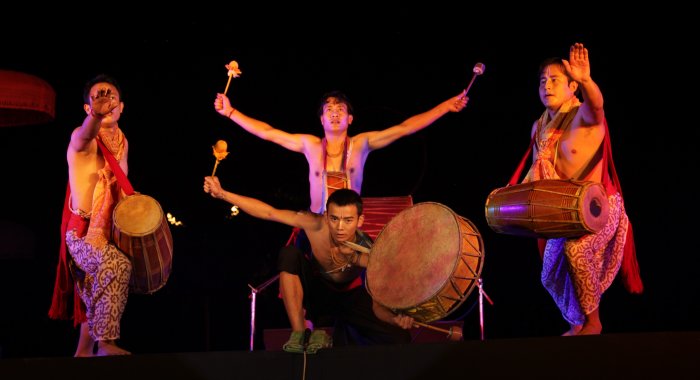 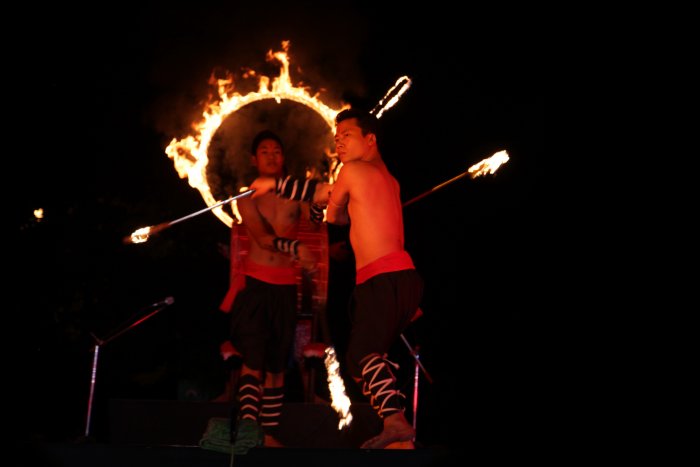 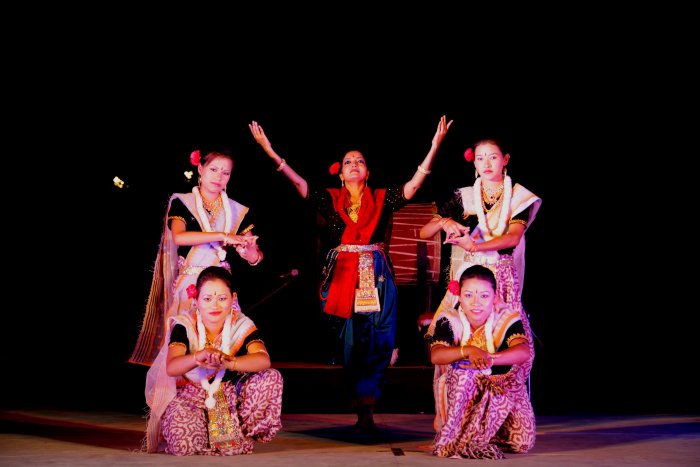 Leisem, organized on October 6 by 'Sparsh Studio of Performing Arts' was remarkable for three reasons. First, the studio offered ample space and neat arrangements for the dancers and instrument players to have easy entries and exits as well as scope for exhibiting their talents so that stage set-up, costumes, make-up and lighting hardly looked being executed in a virtual space at all! Second, the entire ambience was marked by a perceptible sense of sanctity and silent, all-pervading regard for the ritualistic dance form. Conducted under the baton of Suman Sarawgi - groomed since 1990, when she was 6, by Priti Patel and Sruti Bandyopadhyay, and honed by many trips to Manipur to imbibe the culture - the result was entirely satisfactory. Third, Suman led the conclave of four very young and well-trained Manipuri female dancers, dancing alongside equally vigorous and youthful male percussionists, on pung, dholak, flat drum and large drum, apart from a highly skilled player on the ancient bowed string instrument Pena. Leisem, signifying 'creation', was serenaded by the Pena player with his lilting Manipuri song of creation myth, taken over by the Thang Ta dancers with fired sticks and flashing swords and igniting the backstage fire-ball, probably the new born sun. Creation was also hailed with Riks (hymns) from the Rig Veda:Antarikshenamah, bayabenamah... Indeed, the Manipuri rituals kept alternating with Rig Veda hymns eulogizing the Divine Trinity of Creation, Preservation and Destruction. The most graphic ritual of creation of ritual fire by rubbing sacred stones was followed by the Thang Ta artistes with swirling swords and spears. Gradually came the Vaishnavite Pung players, sidelined by Bhangi Parengs splendidly rendered by the five female dancers. After another spell of Rig Vedic recitations appeared the ritualistic rendering of Lai Haraoba steps by the female dancers. Suman's graceful solo -- with the Pena player following her - was sheer joie de vivre. The mood thereafter was remarkably folksy with fleet footed females creating rhythmic vibes. Then it became time for displaying Pung skills and flat drum skills, with merry-go-rounds that are sine qua non for classical Manipuri programs. 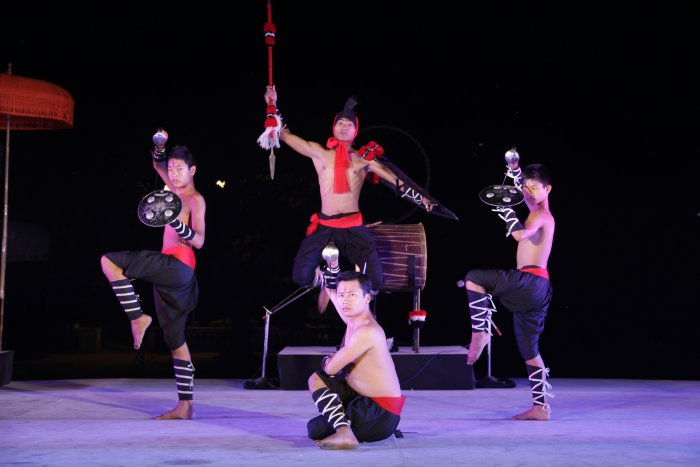 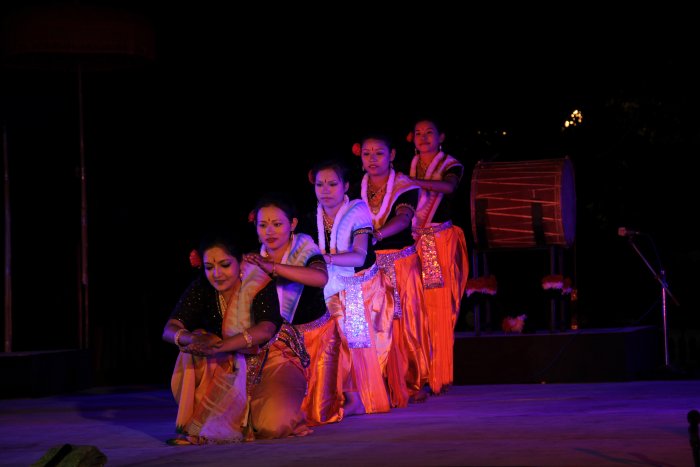 Jayadeva's Dashavatar Stotra then came for a quasi-dramatic rendering. The ten dance-segments, well composed by Suman, were particularly visually arresting for the boar, the man-lion, the ploughman, the Buddha and the Kalki incarnations. After another display of Pung players' prowess and simultaneous discarding of heavy turbans came the finale with the Veda's hymn of peace: Purnamadampurnamidam purnatpurnaudachyate... It was quite a well rounded program, to be felicitated in these difficult days. (View Leisem )  Dr. Utpal K Banerjee is a scholar-commentator on performing arts over last four decades. He has authored 23 books on Indian art and culture, and 10 on Tagore studies. He served IGNCA as National Project Director, was a Tagore Research Scholar and is recipient of Padma Shri. Post your comments Please provide your name and email id when you use the Anonymous profile in the blog to post a comment. All appropriate comments posted with name and email id in the blog will also be featured in the site. |